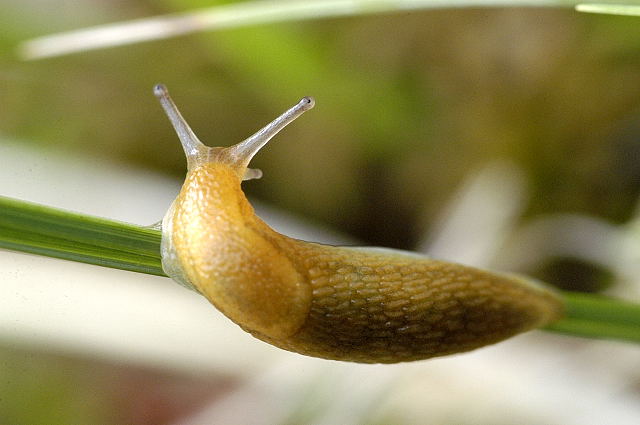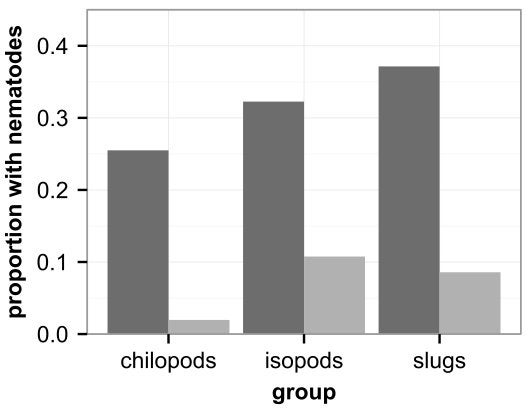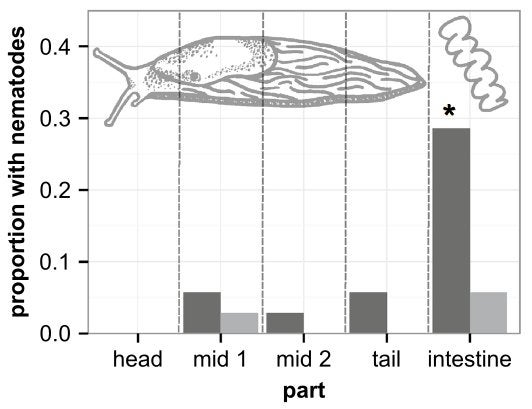This article was published in Scientific American’s former blog network and reflects the views of the author, not necessarily those of Scientific American
Few things are less sexy than a slug (unless, that is, you've seen the immortal slug love scene in Life in the Undergrowth). But to a tiny worm called a nematode, slugs may be the ultimate sexy ride: moist, secure, and maybe even pre-loaded with snacks. Why wriggle painstakingly toward your next meal, risking death by dessication and starvation, when you could travel in style in the Ultimate Invertebrate Commuting Machine?

"Arion 2" by James Lindsey at Ecology of Commanster. Licensed under CC BY-SA 3.0 via Wikimedia Commons.
That, at least, is what is strongly suggested by a new study from a team of German scientists and published in the journal BMC Ecology last month. Though entertaining for us to think about, the findings could have important implications in the world of plant pathology, where nematodes can be vectors – that is, carriers – for serious plant disease, and slugs, apparently, may now be meta-vectors for those diseases via the nematodes.
On supporting science journalism
If you're enjoying this article, consider supporting our award-winning journalism by subscribing. By purchasing a subscription you are helping to ensure the future of impactful stories about the discoveries and ideas shaping our world today.
This is Caenorhabditis elegans, a nematode roundworm.
Nematodes are extraordinarily abundant small invertebrate animals that live in soil and water (I wrote about them before here). Many are parasitic, but many like C. elegans are predators or scavengers.
C. elegans have a particular dilemma because they live in ephemeral environments like rotting fruit, where they feed on the microbes decaying the plant. But when you've finished with your moldy peach, how do you get to the next rotten apple, particularly when it is located a daunting distance away? Without enough food or moisture, C. elegans shrivels up or starves, so hot, dry, food-free environments would seem to present insurmountable barriers to these little worms.
Animals have long been suspected of providing the necessary transport. Dauer larvae – a special developmental stage of nematodes that has attracted much interest among aging researchers because entering this phase vastly extends worms' lifespans – seem to be specially equipped to ride on animals. They even stand straight up on their tails and wave back and forth in an apparent attempt to thumb a ride. But which animals? No one knew for certain.
So the team of scientists tested 373 different invertebrates—isopods, flies, centipedes, spiders, beetles, slugs, locusts, true bugs, and others—for nematodes. Of those groups they examined, only slugs, isopods (also called pill-bugs or roly-polys), and centipedes (also called chilopods) carried nematodes.

Proportion of three groups of animals found in association with nematodes. Dark gray bars = C. elegans, light grey = C. remanei. Fig. 1 from Petersen et al. 2015. Click here for source.
Slugs may be a particularly preferred carrier because, unlike many insects and arthropods, they exude humidity from their slime. Where the slugs carried the nematodes is revealing too. Although some nematodes have been found clinging to slug exteriors, many were found inside slugs – specifically, in the intestines. Significantly more nematodes were found in the intestine of dissected slugs than in any other region.

Proportion of different slug body sections and intestine associated with nematodes. Dark gray bars = C. elegans, light grey = C. remanei. Fig. 2 from Petersen et al. 2015. Click here for source.
Slug intestines not only guarantee high humidity, but there the nematodes may feed on the steady stream of food and the microbiome bacteria that live there, like the buffet table on a very small, very slimy, very slow-moving tropical cruise ship. As expected, dauer larvae seemed to be a particularly abundant life stage among the nematodes found in the slug equivalent of the Lido Deck, possibly because they actively seek out rides while the other life stages are unintentionally picked up by feeding slugs.
Finally, when they are ready to venture back out into the real world, they simply pass outside with the rest of the slug's feces, whence they can ideally crawl to a nearby new food source, which is a real probability when you wind up in slug feces.
Nematodes may be taking extended cruises, too. Scientists isolated nematodes from slugs that were found nowhere near places that could comfortably support the nematodes, like sidewalks close to streets, or yards and fields without decaying plants. That suggests the nematodes were able to persist in the slugs for some time.
In the lab, the scientists confirmed that slugs were able to take up nematodes that then survived the passage through their intestines and emerged alive and fertile, although presumably a bit dazed, in a fresh lump of slug poo. However, under the lab conditions of this experiment, they could only be maintained in the slugs for short periods of time – not much more than a day.
In addition to the implication that this could be yet another unforeseen vector of plant disease, there is also the possibility that in learning to use slugs as buses, these nematodes have also taken a step in the direction of full-fledged parasitism. But where on the spectrum of ecological interactions their relationship lies at present is hard to say. For now, it may simply be a case of adaptive slug commuting, as both slug and worm appear to emerge entirely unscathed by the experience.
Reference
Petersen, Carola, Ruben J. Hermann, Mike-Christoph Barg, Rebecca Schalkowski, Philipp Dirksen, Camilo Barbosa, and Hinrich Schulenburg. "Travelling at a slug’s pace: possible invertebrate vectors of Caenorhabditis nematodes." BMC ecology 15, no. 1 (2015): 19.